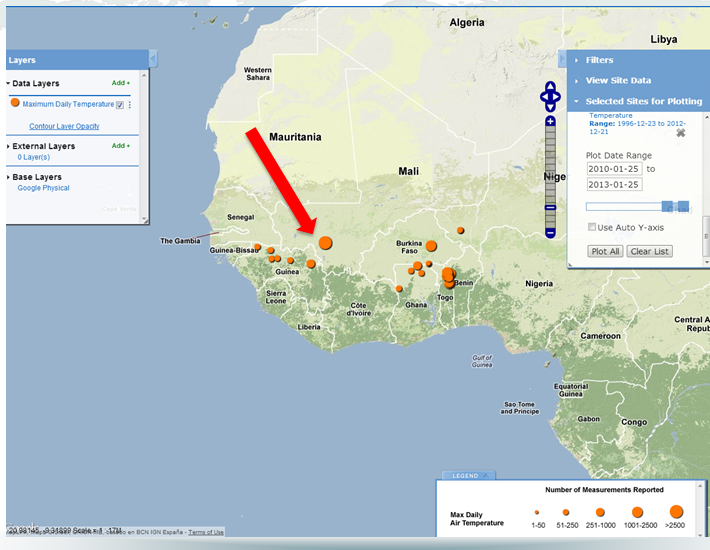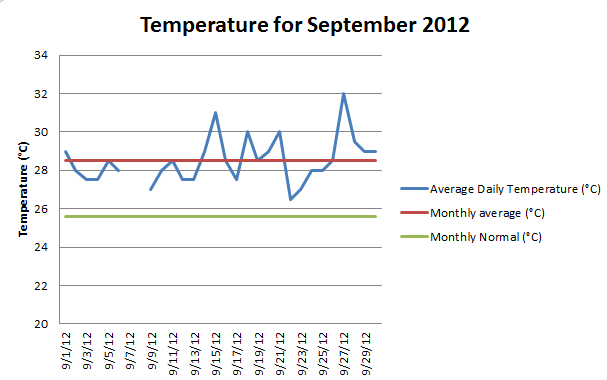September 2012 - Great Global Investigation of Climate
September 2012 GGIC Summary
The month of September 2012 during the Student Climate Research Campaign focused on very basic measurements through the Great Global Investigation of Climate: air temperature, precipitation and soil temperature. One school, Lycee Mamadou M'Bodj de Sebenikuo (LMMS) in the GLOBE Country of Mali, participated in this IOP. LMMS is located outside of Bamako, the capital city of Mali. Bamako is characterized by its hot and humid climate and is classified as an Equatorial Savannah with Dry Winter by the Köppen-Geiger Climate Classification System.

30 years of data is the standard for doing climate research. However, some locations, like Bamako, you can only obtain 8 years of data to perform research. Using the 8 year data record, you find that Bamako averages 25.6 °C for the month. This average is found by finding the daily average temperature by averaging the daily minimum and daily maximum temperatures. Then using the daily averages you can calculate the monthly average. Doing this using LMMS data, you see that the school site observed a much warmer than average September, 28.5 °C.

Note that this school is missing daily average temperatures from September 7 and 8. However, since the percentage of days missing is low, you can perform research using the school's data.
Thank you to the 228 schools representing 30 countries who participated in this IOP: you collected nearly 390,000 data points and entered them into the GLOBE database! Be sure to participate in December when the GGIC begins again!





